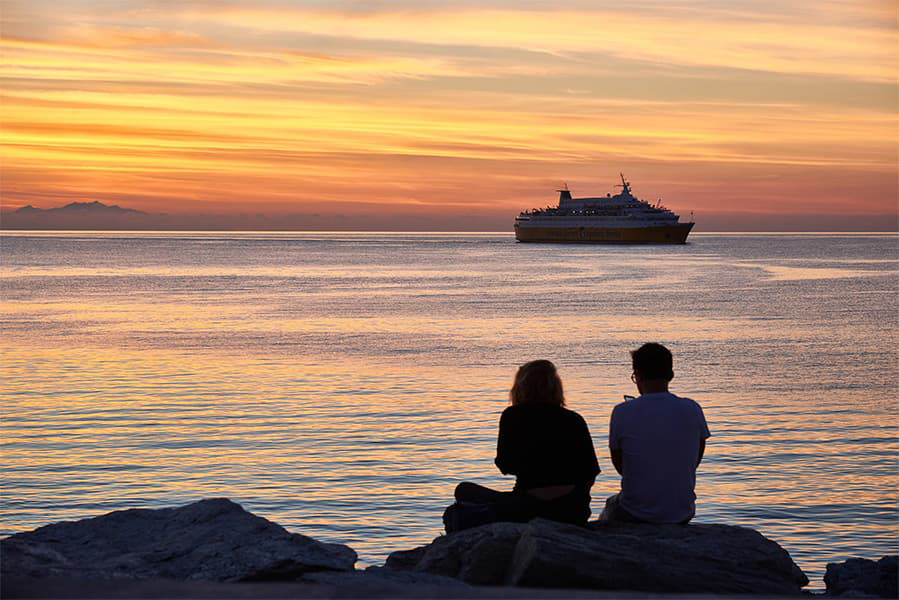Korcula - Bol
Ferries to Brac
Korcula - Bol
Ferries to Brac

Depending on the season their are usually 1 daily and 11 weekly sailings between Korcula and Bol. 2 ferry operators sail between Korcula to Bol, these include
The earliest ferry from Korcula to Bol typically departs Korcula at about 09:15. The average sailing time of a Korcula Bol ferry is approximately 2h 11m and the fastest sailing time is approximately 2h 0m.
Ferry prices for Korcula Bol ferries typically range between €25* and €100*. The average price is around €53*. The cheapest ferry prices from Korcula to Bol start from €25*. The average price for a foot passenger is €53*.
Pricing will vary by season and depend on the number of passengers, vehicle type and sailing time.
The distance between Korcula to Bol is approximately 38.6 miles (62.1km), or 33.5 nautical miles.
No ferry operators currently provide a car ferry between Korcula and Bol
Yes, foot passengers can travel on ferries from Korcula to Bol with Jadrolinija, Krilo Kapetan Luka.
More routes than anyone else.

Compare fares, times & routes in one place.
Change plans easily with flexi tickets.

Book e-tickets & manage trips in-app.
Live ship tracking & real-time updates.

Top-rated customer support when you need it.
| Korcula - Bol Route summary | ||
|---|---|---|
| Departure Country | Croatia | |
| Destination Country | Croatia | |
| No. of Operators | 2 | |
| Operators | Jadrolinija & Krilo Kapetan Luka | |
| Average Price | 53 €* | |
| Average Daily Sailings | 1 | |
| Average Weekly Sailings | 11 | |
| Average Sailing Duration | 2h 11m | |
| Fastest Sailing Duration | 2h 0m | |
| First Ferry | 09:15 | |
| Last Ferry | 18:00 | |
| Distance | 33 nautical miles | |
* Prices subject to change, pricing is taken from last 30 days, last updated 2024-09-04.
For those that are familiar with all the tourist destinations that Croatia has to offer, it will come as a surprise that Korcula isn’t among the most popular. Passengers stepping straight off the ferry will witness the impressive architecture and quaint buildings; the quayside is directly beside the medieval historic centre providing an immediate taste of Croatian history. The entire island of Korcula is steeped in history - shipbuilding and maritime have been prevalent for thousands of years, meaning the ferry service is a proud tradition. Korcula has a population nearly entirely consisting of ethnic Croats, boasting a population of just over 15,000 people. It is the second most populated island on the Adriatic Sea, and is labelled ‘Little Dubrovnik’ for its historic buildings and cobbled streets. It is also host to many interesting cultural landmarks, the most famous being the house where legendary explorer, Marco Polo, was born. Whilst that may be the island’s claim to fame, there is also a beautiful cathedral, many uniquely designed streets and several restaurants serving exquisite local food. The charm of the island lies in its small size; it is easy to explore the all the major sights within half a day, meaning the port will be in walking distance for most visitors. The ferry routes from the port are all to other popular areas of Croatia, including the globally recognised tourist areas of Dubrovnik and Split. Most crossings are relatively short and comfortable, with some of the vessels providing the passengers with bars serving food and drink.
Bol Port borders the Adriatic Sea on the south east coast of Croatia, lying close to the Bosnia and Herzegovina border. Its unique gravel and sandy beaches host drinking water sources, and stretching for up to 10km, it’s quickly become an upcoming gem in Croatia’s thriving tourism industry. Bol Port offers crossings with Croatia Ferries to several of Croatia’s most popular tourism areas, including the historic town of Dubrovnik and the lively city of Split. There is also a crossing to the island of Hvar, a famed spot for holidaymakers looking to relax in the sun. The crossing to Dubrovnik usually lasts around five hours, whereas the crossings to Hvar and Split tend to take just over an hour. The crystal clear waters and fascinating cave structures attract millions of visitors each year, transforming Croatia’s south east coast into a hub of tourism.